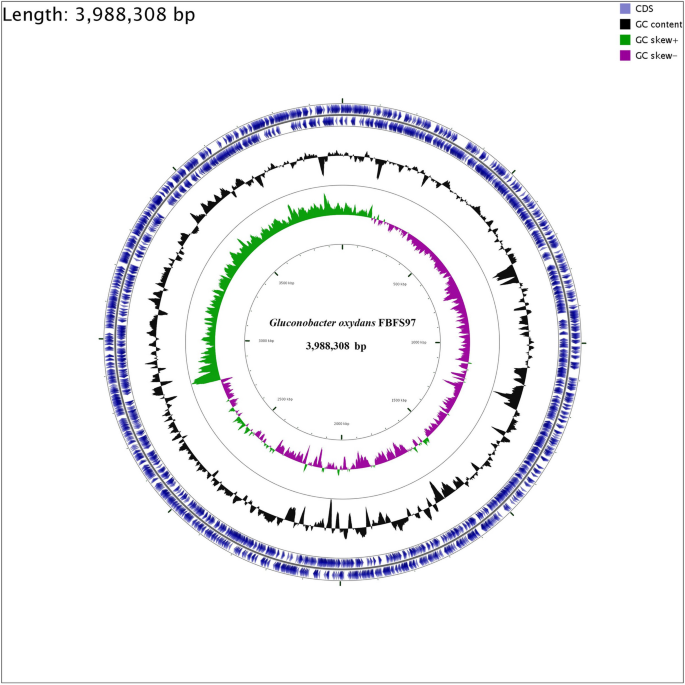Unique Microbe Analysis
Due to delays with the DNA sequencing data from this semester's sourdough samples, we had to make a few changes to our project. Instead of answering our original research question, we did a Unique Microbe Analysis and formed a hypothesis that we will test with our Spring 2021 data.
I chose to analyze samples 49 and 50 from the Fall 2020 data. These two samples were grown and submitted by the same individual. Sample 49 was a control starter and sample 50 was an experimental fruit starter containing peaches. The unique microbe that I identified in the experimental fruit starter that was not also in the control starter was Gluconobacter oxydans.
 |
| If you look very closely at the bottom of the graph, you can see a small line indicating the presence of G. oxydans in the peach starter. This microbe accounted for only 0.082% of this starter's microbial composition. Below you will find the legend for this graph. I have outlined the microbe's name in red. |
------------------------------------------------------------------------------------------------------------------------------------------------------------------
Gluconobacter oxydans
Gluconobacter oxydans is an acetic acid bacteria that naturally occurs in fermented foods and beverages. It is commonly associated with vinegar formation and the fermentation of several non-alcoholic beverages. G. oxydans is used industrially in sorbose fermentation for the mass production of Vitamin C. This microbe has also been associated with sourdough before. According to one study I found on sourdough compositions, a high concentration of acetic acid was observed in sourdoughs made with G. oxydans. Along with various other types of acetic acid bacteria, G. oxydans has been associated with the spoilage of different foods and alcoholic beverages.
Although it was more difficult to find information on how this microbe is linked to peaches than to fermented foods, I did find a couple of articles suggesting that it is present in these fruits. Authors of one article reported that they acquired one of the strains of G. oxydans that they used in their study from a Japanese peach.
This microbe is known for its incomplete oxidation of sugars, alcohols, and acids. Glucose oxidation, sorbitol oxidation, and glycerol oxidation by G. oxydans have all been studied. If this process is something you are interested in learning more about, this link provides a lot of detailed information about G. oxydans' physiology and role in vinegar and fermented beverages. The genome of G. oxydans has been sequenced. You can find information about its complete genome sequence here.
This source mentions the investigation of four fundamental genes of G. oxydans. The glk1 gene encodes glucokinase, the sgdh gene encodes soluble glucose dehydrogenase, and the galp1 and galp2 genes encode galactose-proton symporter. Deletions of these genes were performed in an attempt to determine their involvement in glucose metabolism and transport. In another study, researchers were attempting to generate strains with improved growth yield on glucose. They created strains with a deletion of the mgdH gene, the gene for glucose dehydrogenase.

------------------------------------------------------------------------------------------------------------------------------------------------------------------
Hypothesis
Gluconobacter oxydans has been more closely associated with fruits such as apples and ripe grapes than it has been with peaches. Therefore, I would expect to find this microbe in Spring 2021 samples containing apples, grapes, or peaches. Since G. oxydans is an acetic acid bacteria that is commonly associated with vinegar formation, I would also expect to find this microbe in samples that have an aroma similar to vinegar.
--------------------------------------------------------------------------------------------------------------------------------------------------------
Citations
https://www.sciencedirect.com/science/article/abs/pii/S0963996917309304?via%3Dihub
https://citeseerx.ist.psu.edu/viewdoc/download?doi=10.1.1.1050.6254&rep=rep1&type=pdf
https://www.researchgate.net/publication/11977240_Gluconobacter_oxydans_Its_biotechnological_applications
https://onlinelibrary.wiley.com/doi/full/10.1111/1541-4337.12440
https://mra.asm.org/content/1/1/e00003-13.full
https://www.sciencedirect.com/science/article/pii/S0944501313001274
https://aem.asm.org/content/76/13/4369
https://www.nature.com/articles/s41598-020-70404-4





Comments
Post a Comment